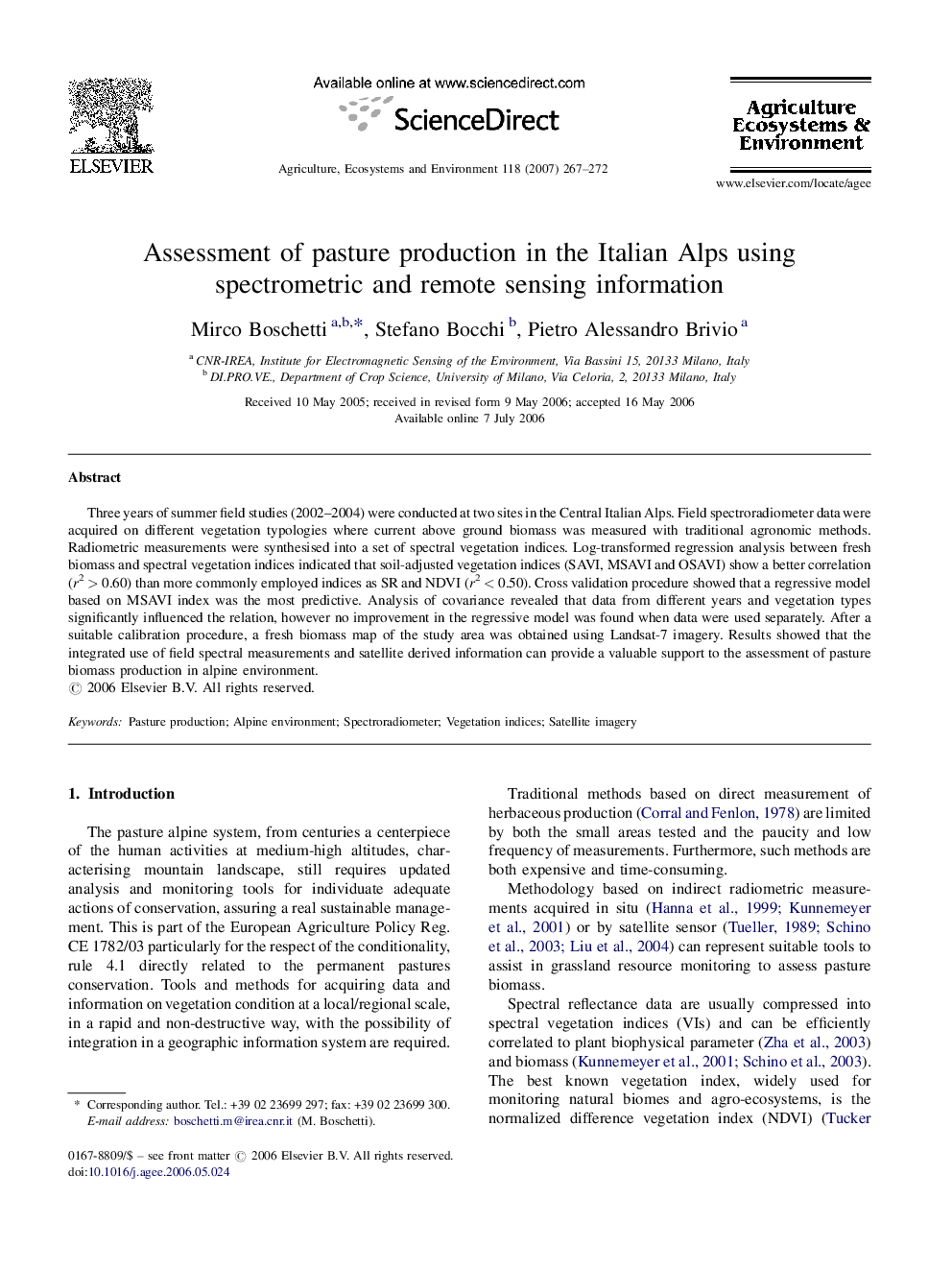| Article ID | Journal | Published Year | Pages | File Type |
|---|---|---|---|---|
| 2415811 | Agriculture, Ecosystems & Environment | 2007 | 6 Pages |
Three years of summer field studies (2002–2004) were conducted at two sites in the Central Italian Alps. Field spectroradiometer data were acquired on different vegetation typologies where current above ground biomass was measured with traditional agronomic methods. Radiometric measurements were synthesised into a set of spectral vegetation indices. Log-transformed regression analysis between fresh biomass and spectral vegetation indices indicated that soil-adjusted vegetation indices (SAVI, MSAVI and OSAVI) show a better correlation (r2 > 0.60) than more commonly employed indices as SR and NDVI (r2 < 0.50). Cross validation procedure showed that a regressive model based on MSAVI index was the most predictive. Analysis of covariance revealed that data from different years and vegetation types significantly influenced the relation, however no improvement in the regressive model was found when data were used separately. After a suitable calibration procedure, a fresh biomass map of the study area was obtained using Landsat-7 imagery. Results showed that the integrated use of field spectral measurements and satellite derived information can provide a valuable support to the assessment of pasture biomass production in alpine environment.
